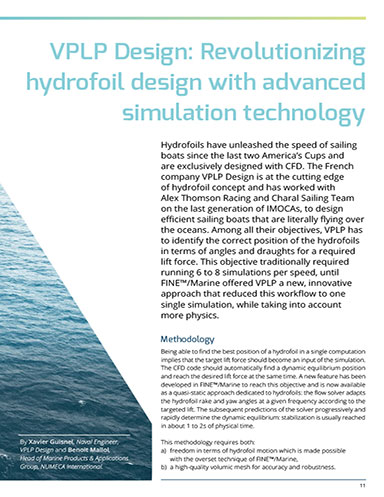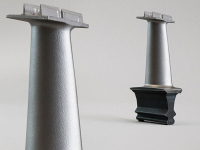
March 27, 2020
Hydrofoils have unleashed the speed of sailing boats since the last two America’s Cups and are exclusively designed with CFD. The French company VPLP Design is at the cutting edge of hydrofoil concept and has worked with Alex Thomson Racing and Charal Sailing Team on the last generation of IMOCAs, to design efficient sailing boats that are literally flying over the oceans.
Among all their objectives, VPLP has to identify the correct position of the hydrofoils in terms of angles and draughts for a required lift force. This objective traditionally required running 6 to 8 simulations per speed, until FINE™/Marine offered VPLP a new, innovative approach that reduced this workflow to one single simulation, while taking into account more physics.
Methodology
Being able to find the best position of a hydrofoil in a single computation implies that the target lift force should become an input of the simulation.
The CFD code should automatically find a dynamic equilibrium position and reach the desired lift force at the same time. A new feature has been developed in FINE™/Marine to reach this objective and is now available as a quasi-static approach dedicated to hydrofoils: the flow solver adapts the hydrofoil rake and yaw angles at a given frequency according to the targeted lift. The subsequent predictions of the solver progressively and rapidly determine the dynamic equilibrium: stabilization is usually reached in about 1 to 2s of physical time.
This methodology requires both:
- freedom in terms of hydrofoil motion which is made possible with the overset technique of FINE™/Marine,
- a high-quality volumic mesh for accuracy and robustness.
Fill out the information below to download the resource.
Latest News








